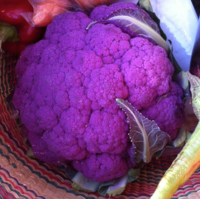
Photo from wikipedia
Abstract Girdling is a widespread agronomic technique to increase the fruit quality characteristics (e.g. size, solid soluble content [SSC] and colour). However, the information on the fruit metabolic changes related… Click to show full abstract
Abstract Girdling is a widespread agronomic technique to increase the fruit quality characteristics (e.g. size, solid soluble content [SSC] and colour). However, the information on the fruit metabolic changes related to this practice still remains unclear and fragmentary. Moreover, girdling duration and application time may greatly affect the plant/fruit metabolic responses producing sometimes counterproductive results. Fruit quality, metabolomic and antioxidant analyses were conducted to characterise the effects of two different girdling dates (4- and 2-weeks before the harvest, 4 W and 2 W, respectively) in skin and pulp of red-fleshed plum (Prunus cerasifera var. pissardii). Overall, the pulp metabolism was altered in both 4 W and 2 W Girdling by inducing accumulation of sugars (sucrose and trehalose), sugar alcohols (inositol and xylitol), organic acids (especially some TCA cycle intermediates such as α-ketoglutaric, citric, isocitric, fumaric and malic acid), amino acids (s-alanine and L-proline), anthocyanins and other phenols. In the skin only girdling 4 W showed major significant differences compared to the control increasing the fruit quality characteristics (size, SSC, dry matter and red colour) and showing greater metabolic changes with respect to the controls. Furthermore, the total antioxidant activity was also increased in both skin and pulp respect to other treatment only in Girdling 4 W. This approach could be used with both P. cerasifera plums as well as other red-fleshed fruit species in order to ensure red-fleshed fruits production with a uniform red colouration and higher content of bioactive compounds.
Journal Title: Scientia Horticulturae
Year Published: 2021
Link to full text (if available)
Share on Social Media: Sign Up to like & get
recommendations!